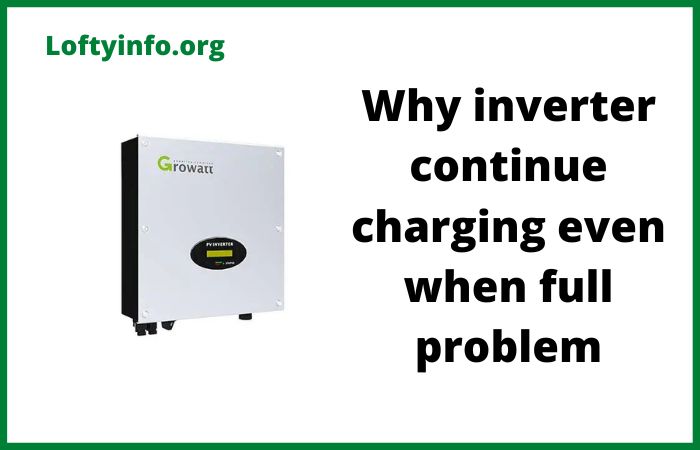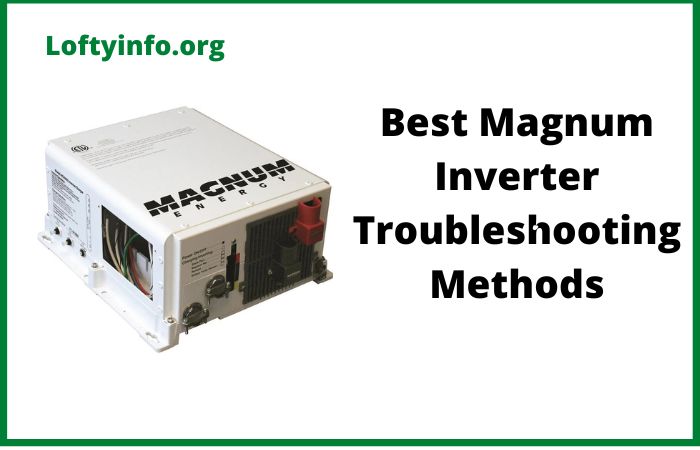Why Your Inverter Fuse Keeps Blowing Frequently: Causes and Solutions
The frustration of dealing with an inverter fuse that blows repeatedly can disrupt your entire power backup system and leave you in the dark when you need electricity most.
This recurring problem not only wastes money on replacement fuses but also indicates underlying issues that could potentially damage your expensive inverter equipment or connected appliances.
Understanding why your inverter fuse keeps blowing is essential to maintaining a reliable power backup system and preventing costly repairs down the line.
Why Your Inverter Fuse Keeps Blowing Frequently
1) Overloading the Inverter Beyond Its Rated Capacity
One of the most prevalent reasons for frequent fuse failures is connecting appliances that collectively exceed your inverter’s power rating.
Every inverter comes with a specific wattage capacity that should never be surpassed.
When you plug in devices that draw more power than the inverter can handle, the fuse acts as a protective mechanism and blows to prevent damage to the inverter’s internal components.
Many homeowners make the mistake of running multiple high-wattage appliances simultaneously without calculating the total load.
Air conditioners, water heaters, washing machines and refrigerators are particularly power-hungry devices.
Even seemingly small appliances can add up quickly when used together.
The initial surge current that some appliances draw during startup can be two to three times their normal operating current, which can trip the fuse even if the total running load seems acceptable.
To prevent overloading, calculate the total wattage of all devices you plan to run simultaneously and ensure it stays well below your inverter’s maximum capacity.
A good practice is to keep your load at around 80 percent of the inverter’s rated capacity to provide a safety margin.
Consider upgrading to a higher capacity inverter if your power needs have increased since the original installation.
2) Battery Problems and Deterioration
The battery connected to your inverter plays a crucial role in the overall system’s health and a failing battery can cause repeated fuse failures.
When batteries age or develop internal faults, they can draw excessive current from the inverter as it attempts to charge them.
This abnormal current draw places stress on the electrical system and can cause the fuse to blow.
Internal short circuits within the battery are particularly problematic.
These shorts can occur due to separator failure, active material shedding or sulfation buildup on the plates.
When a short circuit exists inside the battery, it creates a low-resistance path that allows massive current flow, immediately triggering the fuse.
Deep discharge cycles, poor maintenance and extreme temperatures accelerate battery degradation and increase the likelihood of such failures.
Corroded or loose battery terminals also contribute to this problem. Poor connections create resistance, which generates heat and can cause voltage drops that make the inverter draw more current to compensate.
The increased current demand can exceed the fuse rating. Regularly inspect your battery terminals for corrosion, ensure connections are tight and clean any buildup with a wire brush and baking soda solution.
Test your battery’s voltage and specific gravity readings periodically to assess its health. Replace batteries that show signs of swelling, leakage or consistently fail to hold a charge.
3) Faulty or Incorrect Fuse Rating
Using a fuse with an incorrect amperage rating is a common mistake that leads to frequent blowing.
Some people replace a blown fuse with one that has a lower rating than specified by the manufacturer, thinking it will provide better protection.
This actually causes the fuse to blow under normal operating conditions because it cannot handle the inverter’s legitimate current requirements.
Conversely, installing a fuse with a higher rating than recommended is dangerous and defeats the purpose of having protective circuitry.
The fuse is specifically sized to blow before damage occurs to more expensive components.
A fuse that is too large will allow excessive current to flow, potentially causing fires or destroying the inverter’s internal electronics before the fuse eventually fails.
Quality matters significantly when it comes to fuses.
Cheap or counterfeit fuses may not have consistent manufacturing standards and can blow prematurely or fail to provide adequate protection.
These substandard fuses might have internal defects, poor contact points or materials that degrade quickly with heat cycling.
Always purchase fuses from reputable suppliers and verify that you are using the exact amperage rating specified in your inverter’s manual.
Check the fuse holder itself for signs of overheating, corrosion or loose connections that could affect the fuse’s performance.
4) Short Circuits in the Wiring or Connected Appliances
Electrical short circuits anywhere in your power system will cause immediate fuse failure. A short circuit occurs when the electrical current takes an unintended path of low resistance, bypassing the normal load.
This creates a sudden surge of current that the fuse cannot sustain, causing it to blow instantly.
Short circuits can occur in several locations throughout your system.
Damaged wiring with exposed conductors can touch each other or grounded surfaces, creating a direct path to ground.
Rodents chewing through insulation, nails or screws penetrating wires during construction work and deteriorated insulation due to age or heat exposure are common causes of wiring shorts.
The inverter’s output wiring, extension cords and internal appliance wiring are all potential failure points.
Faulty appliances connected to the inverter can also create short circuit conditions.
Internal component failures, moisture damage or manufacturing defects in devices can cause shorts that will blow your inverter fuse.
Sometimes the problem is intermittent, making it difficult to identify the culprit appliance. To troubleshoot, disconnect all loads from the inverter and check if the fuse still blows.
If not, reconnect appliances one at a time to isolate the problematic device. Inspect all visible wiring for signs of damage, burning smells or discoloration.
Use a multimeter to test for continuity between the hot and neutral wires with the inverter turned off, which would indicate a short circuit.
5) Inverter Internal Component Failure
When the inverter itself develops internal faults, the protective fuse will blow repeatedly regardless of the load or battery condition.
Power transistors, MOSFETs and other switching components inside the inverter can fail due to age, heat stress or voltage spikes.
These components are responsible for converting DC power from the battery into AC power for your appliances.
When they malfunction, they can draw excessive current or create short circuit conditions within the inverter.
Capacitor failure is another common internal problem.
Inverters use large electrolytic capacitors that can dry out or develop leaks over time, particularly in hot environments.
Failed capacitors can cause voltage irregularities and current spikes that trigger the fuse.
Transformer problems, control board failures and damaged rectifier diodes can all manifest as repeated fuse blowing.
Signs that point to internal inverter problems include strange noises like buzzing or humming, excessive heat generation, unusual odors, or visual indicators like error codes or warning lights.
If you have eliminated all external factors such as overloading, battery issues, wiring problems and incorrect fuses but the problem persists, the inverter likely needs professional repair or replacement.
Attempting to repair modern inverters without proper training and equipment is dangerous and can void warranties.
Contact the manufacturer’s service center or a qualified technician for diagnosis and repair.
6) Voltage Fluctuations and Power Surges
Unstable input voltage from your main power supply can stress your inverter and cause repeated fuse failures.
When the incoming AC voltage varies significantly above or below the rated voltage, the inverter’s charging circuit works harder to compensate.
Frequent voltage fluctuations force components to operate outside their optimal range, generating excess heat and drawing abnormal current levels that can exceed the fuse rating.
Lightning strikes, switching of large industrial loads nearby, utility grid problems and poor electrical infrastructure in your area can all cause voltage instability.
Power surges from these sources can damage sensitive inverter components or create conditions that lead to fuse failure.
Your inverter’s built-in surge protection may become overwhelmed during severe events.
Installing a voltage stabilizer or surge protector before the inverter input can help mitigate these issues.
These devices regulate incoming voltage and absorb transient spikes before they reach your inverter.
Consider having an electrician assess your home’s electrical system for proper grounding, which is essential for surge protection to work effectively.
If you live in an area with frequent lightning storms or unreliable grid power, investing in comprehensive surge protection can save your inverter and extend its lifespan.
Understanding these five major causes of frequent inverter fuse blowing empowers you to diagnose and resolve the problem effectively.
Start by checking the simplest issues like proper fuse rating and overloading before moving to more complex investigations of battery health, wiring integrity and internal inverter condition.
Regular maintenance including battery checks, connection cleaning and load management will prevent many of these problems from developing.
When in doubt or if the problem involves internal inverter components, always consult qualified professionals to ensure safe and effective repairs.






